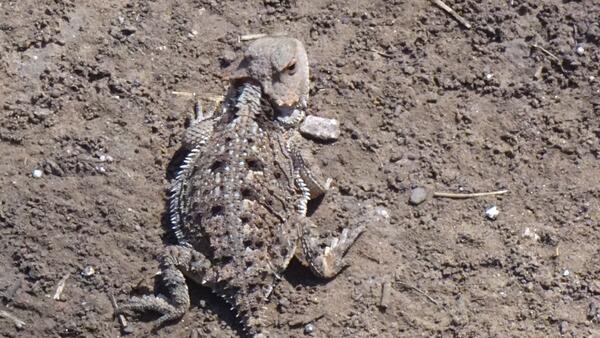Learning from Lizards: The Importance of Biodiversity and Adaptation
“Lizard and Coyote once wrestled to determine who would be able to decide how humans would look. Ultimately Lizard won, and that’s why humans have five-fingered hands rather than paws.” – Creation story of California’s Pomo Indians
By DR. CAMERON BARROWS
The original people of North America’s southwest have always held lizards in high regard. A lizard’s ability to lose and then regrow its tail, as well as periodically shed its skin was an indication of its healing powers. A lizard’s ability to thrive in a desert is an on-gong lesson for living a thoughtful, sustainable lifestyle. In Navajo (Diné) beliefs, horned lizards, also known as Cheii, or grandfather, with their cranial horns and spiny skin, are symbols of protection from evil and are said to have great spiritual power. Navajos are taught to give an offering and prayer whenever they come across a horned lizard. Upon giving an offering, with water and corn pollen, they place him gently on their hearts moving him in an X motion. This is done for their own protection because the horned lizard is the grandfather of all Navajos. I imagine the horned lizard is confused by this attention but is always released otherwise unharmed. Compared to other lizards, horned lizards seem to have a more stoic response to the attentions of we humans.
These customs and beliefs indicate a respect for even the smallest members of the community of plants and animals in which we live, regardless of whether they are supported by modern science. Something as seemingly simple as identifying the similar structure of a lizard’s hand and our own identifies a deep evolutionary connection. The importance of this connection was often lost by other cultures, who viewed themselves as different and above nature. Those cultures have viewed nature as a force to be feared, subdued, and conquered. With ocean and air pollution, toxic contamination of our soil and water, and climate change, we now are all too aware of how important a healthy environment, including a connection to nature is to both our physical and mental well-being.
The data that our Community Science Collaborative continues to collect is aimed at providing a barometer of the health of our desert and sky island mountain environments. One expectation is that as it continues to get hotter, species will either need to adapt, move, or perish. This week I have been looking at our data for hints as to which of these alternatives is occurring. Because of their abundance and ease of observation, I have been focusing on side-blotched lizards, a species with one of the broadest distributions of any North American lizard. The data are quite clear that these lizards are now occupying higher elevations, higher than they were just a decade ago. Of course, lizards aren’t looking up to those higher slopes and opting to move there with the expectation of finding a refuge from the heat. Rather, those already near the upper ends of their current range are producing more hatchlings. As those young disperse, probably randomly, those that head up in elevation are finding fewer competitors and more suitable temperatures and so are thriving.
What about those lizards stuck at the lowest elevations? We might expect their populations to be dwindling, but the data show a more complex response. Those low elevation lizard populations ebb and increase with changes in annual rainfall. The population changes are much more so than at the higher, more moderate elevations. More rain yields more flowers, seeds, insects, and lizards, even at lower, hotter elevations. Droughts have become more common and more severe, but there are still periodic wet years, and at least so far, those wetter years have been enough to keep even just a few lizards in residence. When there is a wet year, the lizard populations explode, exceeding the densities of those high elevation lizards. As many of us learned key lessons on how to live life from our human grandparents, we can also learn from our lizard “grandparents” as well. Lizards, and nature overall, still have much to teach us about resilience and the capacity to handle change.
Nullius in verba – Go outside, tip your hat to a chuckwalla (and a cactus), and think like a mountain
